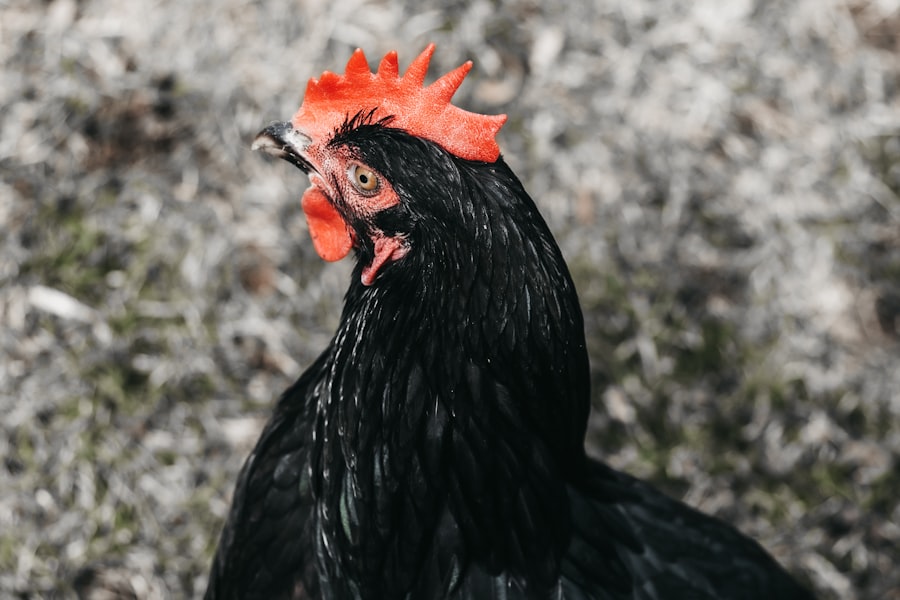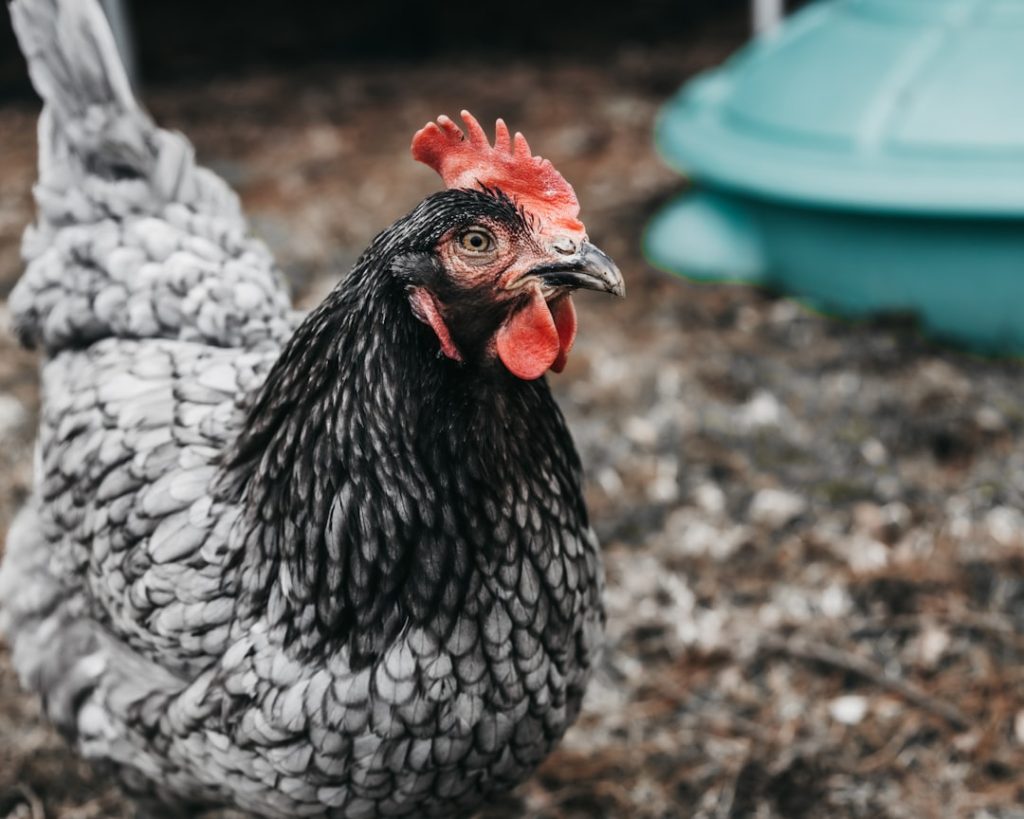Chickens possess natural curiosity and an active disposition, with a strong instinct for environmental exploration. They have the ability to fly short distances, utilizing their wings to evade predators or access elevated perches. Comprehending these innate behaviors is essential for effectively containing chickens within a designated area.
By recognizing their instincts and tendencies, caretakers can anticipate potential issues and implement proactive measures to prevent escape attempts. As social creatures, chickens thrive in flock environments and often exhibit follow-the-leader behavior. Consequently, if one chicken discovers an escape route from the coop or designated area, others may imitate this behavior.
Furthermore, chickens display territorial tendencies and may attempt to establish their own domains by flying over fences or barriers. Understanding these natural inclinations allows for the implementation of effective strategies to ensure the safety and security of chickens within their allocated space.
Table of Contents
- 1 Clipping the wings of your chickens
- 2 Providing a secure and spacious coop
- 3 Using chicken-friendly fencing
- 4 Training your chickens to stay in their designated area
- 5 Using deterrents to discourage flying
- 6 Regularly monitoring and maintaining your chicken’s environment
- 7 FAQs
- 7.1 What are some methods to keep chickens from flying away?
- 7.2 How can I clip my chicken’s wings to prevent them from flying away?
- 7.3 What are the benefits of providing a covered run for chickens?
- 7.4 What type of netting or fencing is best for preventing chickens from flying away?
- 7.5 Are there any other measures I can take to keep my chickens from flying away?
Key Takeaways
- Chickens are natural foragers and will roam and explore their surroundings
- Clipping the wings of chickens can prevent them from flying over fences and escaping
- A secure and spacious coop is essential for providing chickens with a safe and comfortable living space
- Chicken-friendly fencing, such as wire mesh, can help keep chickens contained in their designated area
- Training chickens to stay in their designated area can be achieved through positive reinforcement and consistency
- Deterrents such as netting or overhead wires can discourage chickens from attempting to fly out of their designated area
- Regular monitoring and maintenance of the chicken’s environment is important for ensuring their safety and well-being
Clipping the wings of your chickens
Understanding the Wing Clipping Process
One effective method for preventing chickens from flying away is to clip their wings. This process involves trimming the primary feathers on one wing, which disrupts their ability to achieve lift and fly long distances. It’s important to note that wing clipping does not cause pain to the chicken, as it only involves cutting the feathers.
Approaching Wing Clipping with Caution
However, it is crucial to approach wing clipping with caution and seek guidance from a professional or experienced individual to ensure it is done correctly. When clipping a chicken’s wings, it’s essential to use sharp scissors and carefully trim the primary feathers on one wing. This should be done in a way that maintains the bird’s balance and prevents injury.
Important Precautions to Take
It’s important to avoid cutting too close to the chicken’s body or cutting any blood feathers, as this can cause discomfort and potential bleeding. By clipping the wings of your chickens, you can effectively limit their ability to fly and reduce the risk of them escaping from their designated area.
Providing a secure and spacious coop

Creating a secure and spacious coop is essential for keeping chickens contained and preventing them from flying away. The coop should be constructed with high-quality materials and designed to withstand potential escape attempts. Additionally, it should provide ample space for the chickens to move around comfortably and engage in natural behaviors such as scratching, perching, and nesting.
A well-designed coop will not only keep the chickens safe and secure but also contribute to their overall health and well-being. When building or selecting a coop for your chickens, it’s important to consider factors such as ventilation, insulation, and predator-proofing. Proper ventilation is crucial for maintaining good air quality and regulating temperature within the coop, while insulation can help protect the chickens from extreme weather conditions.
Additionally, implementing predator-proof measures such as secure latches, sturdy fencing, and predator-proof flooring can help prevent unwanted intruders from accessing the coop. By providing a secure and spacious coop, you can create a safe and comfortable environment for your chickens while minimizing the risk of them flying away.
Using chicken-friendly fencing
In addition to a secure coop, using chicken-friendly fencing is essential for containing your chickens within a designated area. The fencing should be tall enough to prevent the chickens from flying over it and sturdy enough to withstand potential escape attempts. Additionally, the fencing should be designed in a way that prevents predators from gaining access to the chicken’s enclosure.
When selecting fencing for your chickens, it’s important to choose materials that are durable, weather-resistant, and safe for the birds. One popular option for chicken fencing is poultry netting, which is specifically designed to contain chickens and other poultry birds. Poultry netting is typically made from durable materials such as galvanized steel or plastic and is available in various heights to suit different needs.
Another option is hardware cloth, which is a sturdy wire mesh that can be used to create a secure enclosure for chickens. When installing chicken-friendly fencing, it’s important to ensure that it is properly secured to the ground and free from any gaps or openings that could allow the chickens to escape.
Training your chickens to stay in their designated area
Training your chickens to stay in their designated area can be an effective way to prevent them from flying away. This can be achieved through positive reinforcement techniques such as using treats or rewards to encourage the chickens to stay within the boundaries of their enclosure. By consistently rewarding the chickens for staying in their designated area, you can reinforce this behavior and discourage them from attempting to fly away.
One approach to training chickens to stay in their designated area is to use treats such as mealworms or seeds as a reward for remaining within the boundaries of their enclosure. By consistently offering these treats when the chickens stay put, they will begin to associate staying in their designated area with a positive outcome. Additionally, you can use verbal cues or signals to communicate with the chickens and guide them back to their designated space if they attempt to fly away.
With patience and consistency, training your chickens to stay in their designated area can help minimize the risk of them escaping.
Using deterrents to discourage flying

Discouraging Chickens from Flying Away
Visual and Audible Deterrents
In addition to training, using deterrents can be an effective way to discourage chickens from flying away. There are various deterrent options available, including visual deterrents such as reflective tape or shiny objects that can startle the chickens and discourage them from attempting to fly over fences or barriers. Additionally, audible deterrents such as noise-making devices or clappers can be used to startle the chickens and deter them from flying away.
Physical Barriers
Another effective deterrent for preventing chickens from flying away is the use of physical barriers such as netting or overhead covers. These barriers can prevent the chickens from gaining enough height or momentum to achieve lift and fly over fences or enclosures.
Combining Deterrents for Maximum Effect
By implementing deterrents such as visual cues, audible signals, and physical barriers, you can effectively discourage your chickens from attempting to fly away and keep them contained within their designated area.
Regularly monitoring and maintaining your chicken’s environment
Regularly monitoring and maintaining your chicken’s environment is crucial for preventing them from flying away. This involves conducting regular inspections of the coop, fencing, and surrounding area to identify any potential escape routes or vulnerabilities. By addressing any issues promptly and making necessary repairs or adjustments, you can minimize the risk of your chickens escaping.
In addition to regular inspections, it’s important to maintain a clean and organized environment for your chickens. This includes keeping the coop clean and free from debris, providing fresh bedding regularly, and ensuring that food and water sources are readily available. A well-maintained environment not only contributes to the health and well-being of your chickens but also reduces the likelihood of them attempting to escape.
In conclusion, understanding the natural behavior of chickens is essential for keeping them contained within a designated area. By implementing strategies such as wing clipping, providing a secure coop and spacious enclosure, using chicken-friendly fencing, training, using deterrents, and regularly monitoring and maintaining their environment, you can effectively prevent your chickens from flying away while ensuring their safety and well-being.
If you’re looking for ways to keep your chickens from flying away, you may also be interested in learning about what geese can eat. Check out this article on poultrywizard.com to find out more about feeding geese and how it relates to keeping them on your property.
FAQs
What are some methods to keep chickens from flying away?
Some methods to keep chickens from flying away include clipping their wings, providing a covered run, and using netting or fencing to prevent them from flying over.
How can I clip my chicken’s wings to prevent them from flying away?
To clip a chicken’s wings, you can trim the primary feathers on one wing, which will make it unbalanced and less likely to fly. It’s important to only trim the feathers and not the actual wing.
What are the benefits of providing a covered run for chickens?
A covered run provides a safe and enclosed space for chickens to roam without the risk of flying away. It also protects them from predators and provides shelter from the elements.
What type of netting or fencing is best for preventing chickens from flying away?
Using poultry netting or hardware cloth with small openings can help prevent chickens from flying over. Additionally, adding a roof to the enclosure can further deter them from escaping.
Are there any other measures I can take to keep my chickens from flying away?
In addition to clipping wings and providing a covered run, you can also consider keeping the chickens in a secure coop at night and using deterrents such as scarecrows or reflective objects to discourage flying. Regularly checking for any potential escape routes and reinforcing the enclosure as needed is also important.

Meet Walter, the feathered-friend fanatic of Florida! Nestled in the sunshine state, Walter struts through life with his feathered companions, clucking his way to happiness. With a coop that’s fancier than a five-star hotel, he’s the Don Juan of the chicken world. When he’s not teaching his hens to do the cha-cha, you’ll find him in a heated debate with his prized rooster, Sir Clucks-a-Lot. Walter’s poultry passion is no yolk; he’s the sunny-side-up guy you never knew you needed in your flock of friends!
Meet Walter, the feathered-friend fanatic of Florida! Nestled in the sunshine state, Walter struts through life with his feathered companions, clucking his way to happiness. With a coop that’s fancier than a five-star hotel, he’s the Don Juan of the chicken world. When he’s not teaching his hens to do the cha-cha, you’ll find him in a heated debate with his prized rooster, Sir Clucks-a-Lot. Walter’s poultry passion is no yolk; he’s the sunny-side-up guy you never knew you needed in your flock of friends!







